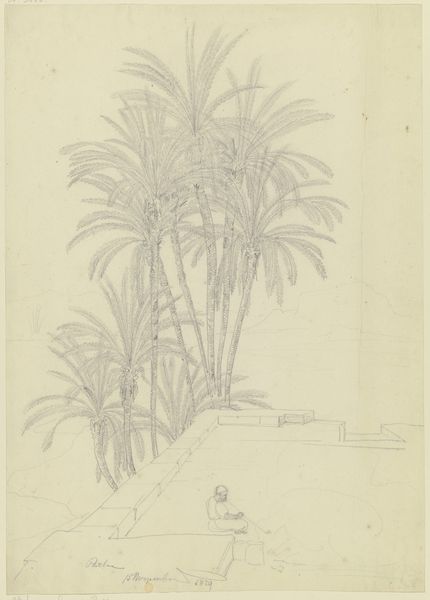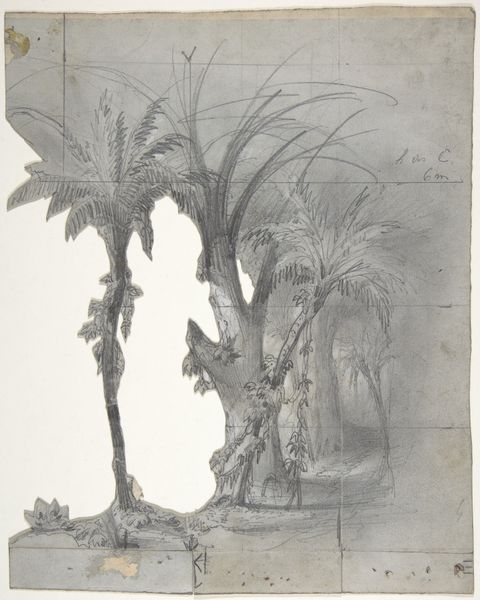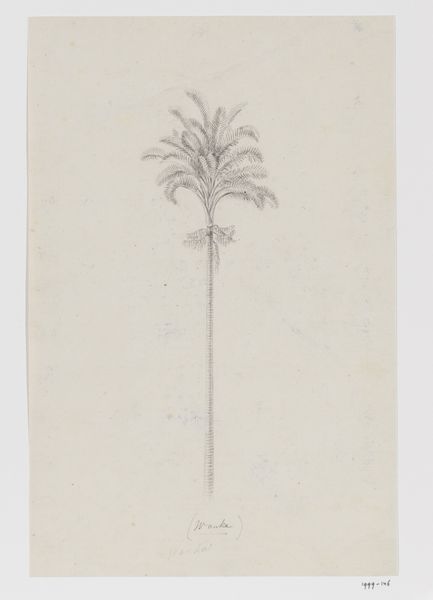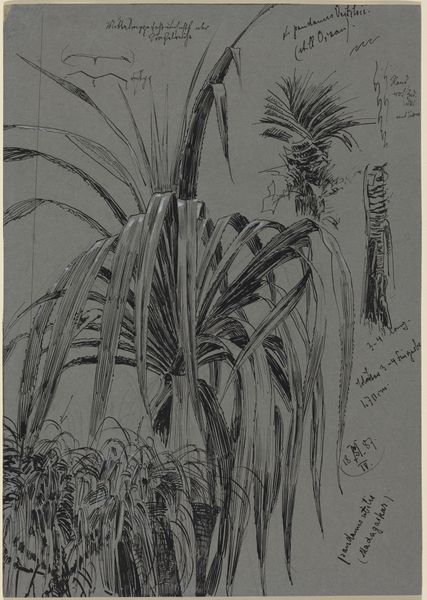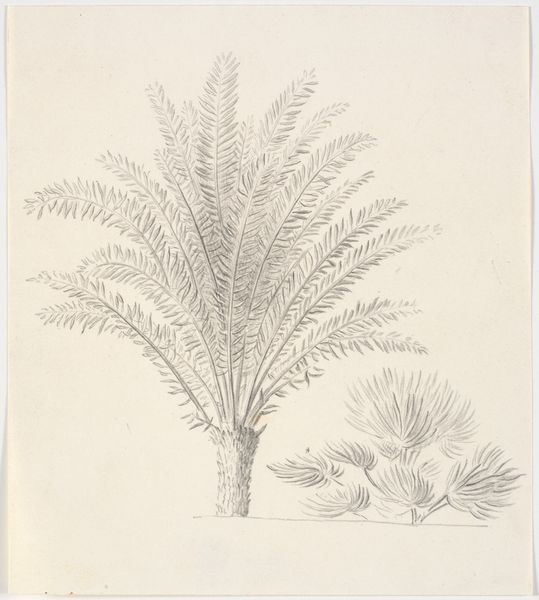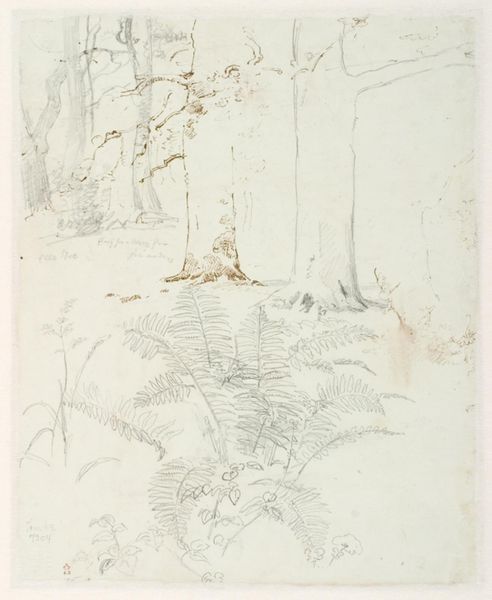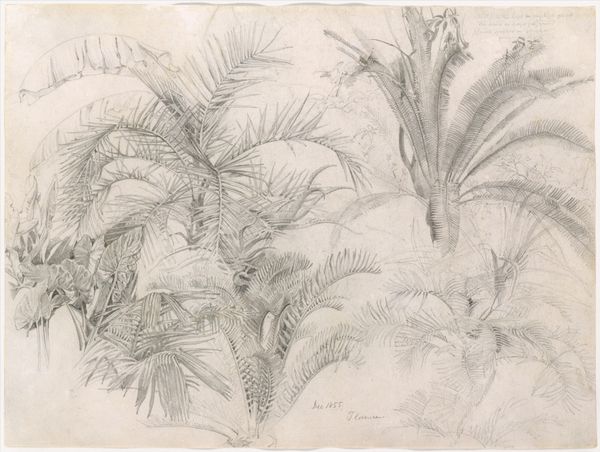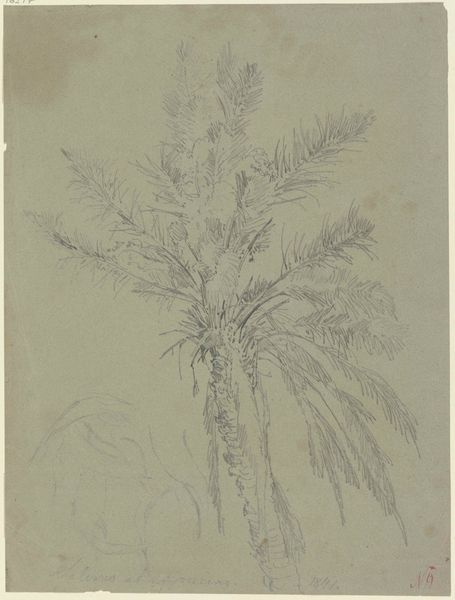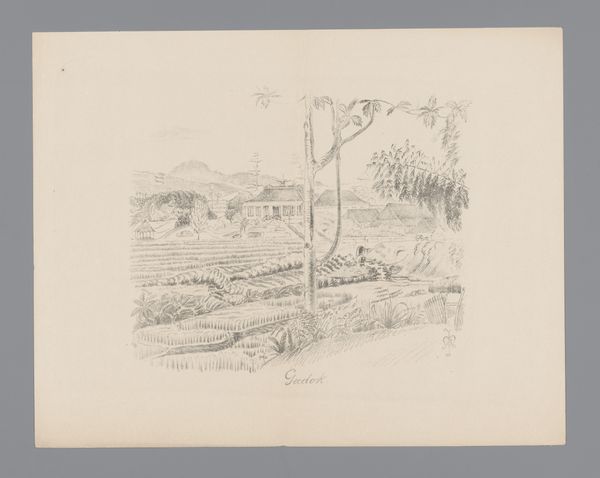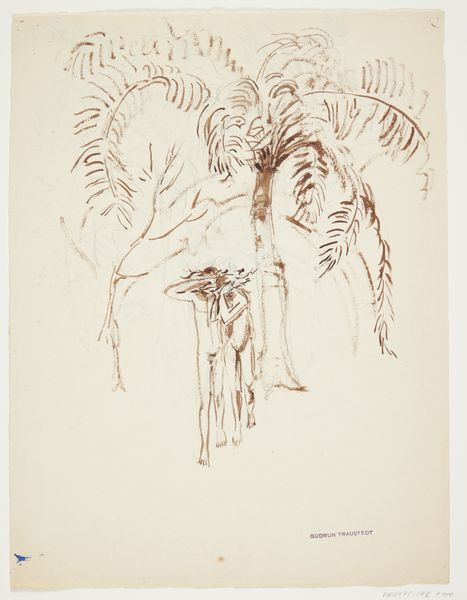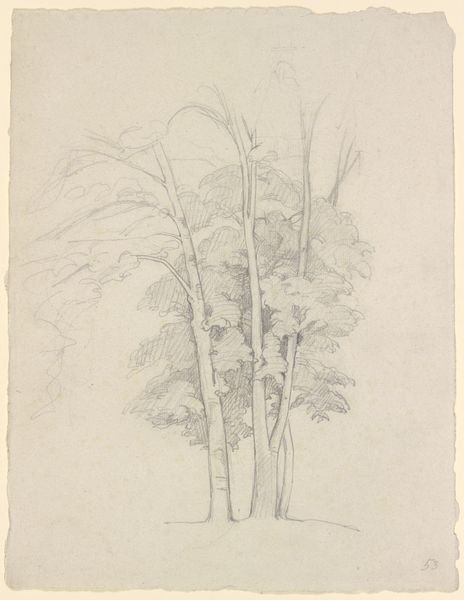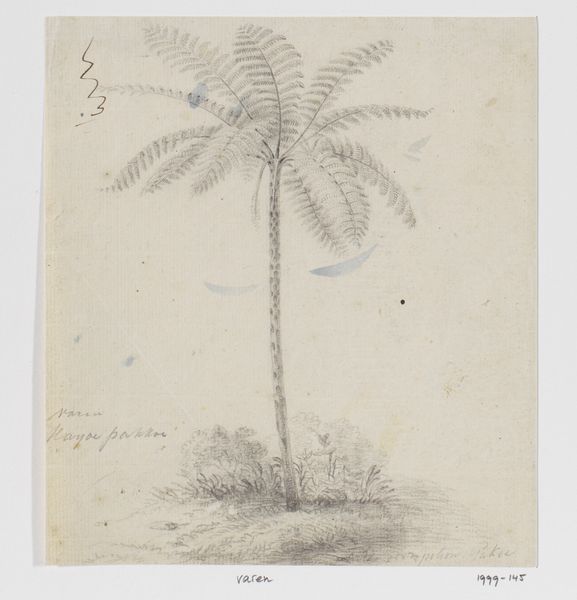
drawing, pencil
#
drawing
#
landscape
#
etching
#
pencil
#
orientalism
#
genre-painting
#
realism
Dimensions: height 328 mm, width 247 mm
Copyright: Rijks Museum: Open Domain
Editor: This drawing, "Dorpshuizen met grote arénpalm, Java" or "Village houses with large areng palm, Java," by Adrianus Johannes Bik, dates from around 1816 to 1846. It’s done in pencil. I’m immediately struck by how calm and simple the composition is. What catches your eye when you look at it? Curator: The areng palm is undoubtedly the central figure, its towering presence laden with symbolism. Palms, historically, represent paradise, victory, and eternal life, themes frequently recurring in colonial-era depictions of Javanese landscapes. Notice its dominating size, subtly implying both bounty and the exotic "otherness" of Java. Do you sense any tension between the natural grandeur of the palm and the more humble depiction of village life? Editor: That's fascinating! I hadn't considered the symbolism of the palm itself. I do see that the houses feel…dwarfed? It's almost like the artist is showcasing the "exotic" nature, overshadowing the everyday life of the villagers. Curator: Precisely! This perceived tension speaks volumes about the colonial gaze – a longing for the exotic juxtaposed against the ordinariness of daily life. Even the lone figure seems to be contemplating this relationship. Do you think Bik intended a critical reading or simply a romantic portrayal? Editor: Hmm, that's a tough question. It's hard to say without more context about the artist's intentions. Maybe both? A romanticized view with a hint of the power dynamics at play? Curator: Perhaps. This delicate balance reveals the potency of visual symbols in shaping narratives. It prompts us to question how we, as viewers, perpetuate or challenge these established narratives today. Editor: This really highlights how much can be conveyed through seemingly simple images, especially when you consider their historical context. It definitely changes how I see the drawing now!
Comments
No comments
Be the first to comment and join the conversation on the ultimate creative platform.
